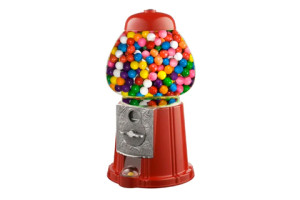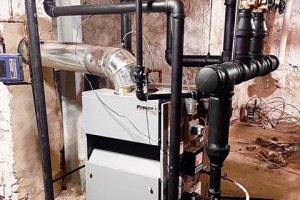
Hello, old friend. I’m writing today to say thanks, and to say farewell. This will be my last column.

I got a letter from a friend who is a relocated New Yorker. He now lives in a part of America where people with excess money build second homes that they’ll use for a few weeks each year, at best. Many of these homes perch on mountain ledges, like multimillion-dollar daredevils. These houses have master baths with 80-GPM showers, and 2-GPM toilets. They wait patiently for their owners to arrive, these houses. They wait with the heat set low. Glycol chugs through their copper, steel, PEX and rubber veins and arteries. Many of these houses have more than one boiler. Many have three or four. Many of these houses have boiler rooms that look like they belong in the bowels of a ship. They sit and wait, these houses. America is a wonderful place and it’s good to be the king.
My friend works for a wholesaler and he designs the heating systems that go into these second homes. He was raised here in New York on old steam systems, gravity hot water heating, diverter tees and other hydronic antiquities. He moved away to the Land of the New Hydronic and what he does is as close to art as we can get in this business.
He is not a professional engineer. He just knows how to design superb hydronic heating systems, using all this new stuff that’s available to us. He fills a gap in the building world, that place where the house being built is large enough to make a contractor gulp, but not so huge that the builder wants to pay a professional engineer. Like it or not, this happens. It’s the nature of the building world.
So my friend designs the systems that heat the modern palaces that perch on rock ledges and sit tall and wide in mountain meadows, and all he looks for in return is the sale of the mechanical equipment. That, and the satisfaction that comes from knowing he did good work, and that his work made people comfortable.
But there’s this thing that nags at him, and that’s what he wrote to tell me:
“I see a huge problem in our industry that, in my opinion, can never be completely resolved. I have designed heating systems for three to four hundred residences and commercial jobs every year for the past six to eight years. I think most of these systems are good designs and I have had almost zero complaints. The problem I have is that neither the mechanical contractor nor I can make it back to all these jobs enough times to monitor the heating system's performance. As the climate changes I’d love to be able to attempt to optimize the settings on the controls to match what is actually needed for the job. We have to compromise the control settings so we are relatively assured we won't get an inordinate amount of callbacks.
“My worst scenario is this: I know I have jobs out there where the heating system controls were set to ignore outdoor temperature and maintain a set point supply-fluid temperature of somewhere between 150- and 170-degrees F. to the radiant floors all the time. This was to supply heat during construction, or to dry out hardwood during construction. I also know that, once the job was complete, some of these control settings were never changed. I ask my mechanical contractors to afford me the opportunity of a final walkthrough to check the control settings once the homeowners have moved in, but I doubt I get to do this final walkthrough 50% of the time.
“I don't feel good knowing this is happening but I can't do much about it because of the number of jobs I have to deal with in a given year.”
There’s a quiet nagging going on in the Land of the New Hydronics. It nags at my friend, and I’m sure it nags at others who really care about the work because, when done well, the work outlives the designer. The work is our monument.
The nagging speaks well for these people. And it speaks well for modern hydronics. You see even though the settings are not what they should be, not what they could be to ensure the best system efficiency, my friend gets almost no complaints.
That’s the nature of hydronics. It works. Even when treated with benign neglect, it works.

Hello, old friend. I’m writing today to say thanks, and to say farewell. This will be my last column.

My six-year-old grandboy, Brendan, was in the vestibule of the diner when the bubblegum machine caught his attention. It was one of those spiral models that appeared in t...

Subdural posed a question on The Wall at HeatingHelp.com in the Strictly Steam section, where some of the sharpest knives in the drawer post every day. The question was a...